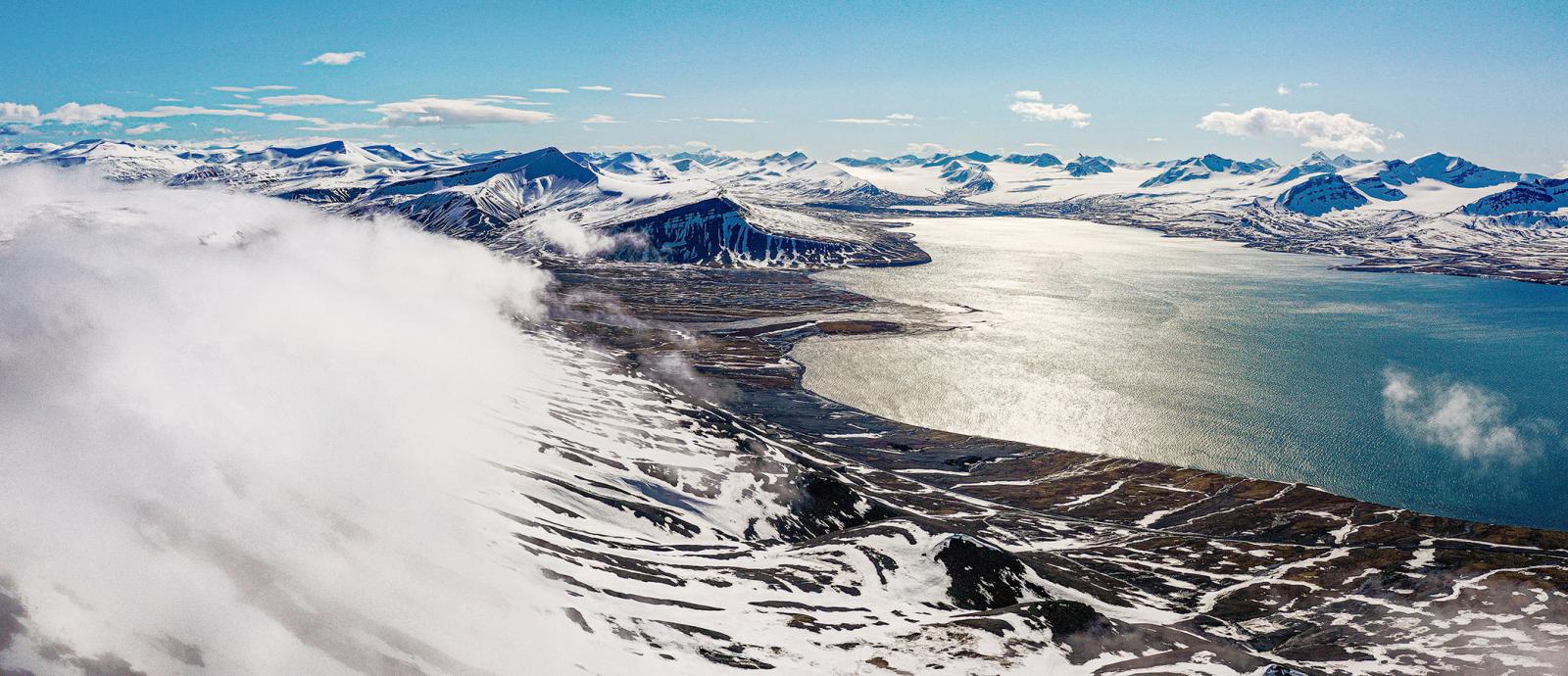The Norwegian Inside Passage is a protected shipping lane that runs from Norway’s capital of Oslo, down the Skagerrak coast and around the country’s southern tip. It continues north along the coastline of the Norwegian Sea, before eventually terminating in the Russian waters of Siberia. It has been used by mariners for centuries, its channels protected from the dangers of the open water by countless skerries and the rugged coastline presenting opportunities for shelter in its many natural bays and inlets.
The Lofoten Islands stretch 118 miles into the Norwegian Sea from Norway’s coast. Ships in the archipelago’s cozy fishing harbors are dwarfed by the hulking massifs rising from the waters. The setting was ideal for Norse settlements in the early Viking Age. Cod has long been harvested from these waters as they come here to spawn. More recently, the fish have been caught from traditional rorbus, charming cottages that hover above the waters on stilts. The Lofoten Islands are beautiful any time of year, but the summertime midnight sun illuminates their magnificent glory.
Tromsø is Norway’s most northerly city and has long been considered the gateway to the Arctic. During the summer months, pretty wooden houses exude an air of sophistication as they bask beneath the glow of the Midnight Sun. Winter brings pristine landscapes surrounded by snowcapped peaks and the aurora borealis, whose magical lights dance across the nighttime skies. World-renowned explorers have set sail from Tromsø’s shores; Roald Amundsen, Norway’s first son and the first explorer to reach both poles, is commemorated with a bronze statue in the city.
DAY 8 - HONNINGSVAG (NORDKAPP), NORWAY
Honningsvåg overlooks a pristine bay of the Barents Sea on Magerøya Island. This unassuming enclave grew mainly on the fishing industry, like so many in this remote region. Honningsvåg has ample charms, including a rich Sami culture and a deep love of the birdlife that lives here. But it is the surrounding beauty that draws visitors: starkly beautiful tundra dotted with mountain birch trees, distant rocky islands and rolling slopes that ascend into mountains. One of Europe’s most stunning natural sights, Nordkapp, or North Cape, rises on the island’s rugged northern coast.
DAY 9 - SAIL THE BARENTS SEA
Named for 16th-century Dutch navigator and polar explorer Willem Barentsz, the Barents Sea is the gateway to the Arctic from the northernmost shores of Europe and home to an astonishing diversity of marine life. As you sail, take advantage of the array of delicious cuisine offered on board. You may visit Mamsen’s, our casual gourmet deli, any time from early morning to late at night for a taste of traditional Norwegian fare. Or, dine at Manfredi’s Italian Restaurant for authentic fare with options ranging from Milanese risotto to Tuscan-inspired classics.
DAY 10 - LONGYEARBYEN, SVALBARD & JAN MAYEN
Capital of the Svalbard archipelago, tiny Longyearbyen is surrounded by the permanent snowfields that blanket the island of Spitsbergen. The world’s northernmost city was founded in 1906 by American businessman John Longyear when he started a mining operation here. The city was almost completely destroyed during World War II by the German navy, but was subsequently rebuilt after the war. Today, the town is beloved for its art galleries and museums, as well as the local gourmet restaurant boasting one of Europe’s largest wine cellars with more than 20,000 bottles.
DAY 11 - LONGYEARBYEN, SVALBARD & JAN MAYEN
Svalbard’s setting is marked by stunning fjords, mountain peaks and thick glaciers that have formed over millennia, while Alkhornet mountain and its looming cliffs date back more than one billion years. Wildlife flock to this stark landscape during the summer—puffins, polar guillemot and kittiwake descend en masse each year. The Svalbard Museum showcases the vast array of special plant and animal life that reside here, as well as everyday life for its human residents, from the arrival of the whalers during the 17th century to present-day miners.
DAY 12, 13 - SAIL THE NORWEGIAN SEA
Journey to what was once believed to be the “end of the world,” where sea monsters lurked and ships were lost on treacherous waters. As you sail today, savor a range of international cuisine on board. Choose from a variety of international flavors at the World Café, enjoy al fresco dining on the Aquavit Terrace, or regional specialties in The Restaurant.
DAY 14 - ISAFJORDUR, ICELAND
ĺsafjördur was founded in the 9th century by the Viking Helgi Magri Hrólfsson. Foreign merchants arrived in the 16th century and set up trading posts here. Today, ĺsafjördur is home to one of the largest fisheries in Iceland and, despite its remote locale, boasts a cultural scene rich in music and drama. The oldest house in Iceland is here, built in 1734, as is the country’s largest concentration of old timber-frame homes. Many visitors explore farther afield, delving into the surrounding wilderness of Hornstrandir or discover the fishing heritage of charming coastal towns.
DAY 15 - REYKJAVIK, ICELAND
Reykjavík is the world's northernmost capital city yet captures the distinctive feel of a fishing village. The Kentucky-sized island is Europe’s westernmost nation and one of the wildest places on earth. It is also lauded as one of the cleanest and most civilized countries, committed to finding the perfect balance between day-to-day living and harnessing its natural resources with eco-friendly practices. Vikings landed on this pristine land during the 9th century; their arrival is well chronicled in the medieval Sagas preserved at the Culture House. After breakfast, disembark your ship and journey home.
Item 1 of 4: Honningsvag Harbor, full of boats and buildings and backed by a huge hill
